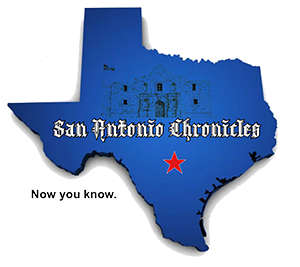After 13 years at VIA Metropolitan Transit and 40 years within the transportation business, the transit company’s CEO Jeffrey Arndt formally retired on Jan. 3.
Whereas he has loads of hobbies to maintain him busy, Arndt imagines he’ll discover an occupation exterior the realm of transit, maybe instructing math or promoting jewellery.
“I need to have this subsequent chapter be one thing not like something I’ve carried out earlier than,” Arndt instructed host Robert Rivard on the most recent episode of the bigcitysmalltown podcast. “So my husband and I can be transferring to Mexico subsequent yr.”
However Arndt can be watching San Antonio and can go to to have a good time the fruits of his and his group’s labor.
VIA anticipates breaking floor on the $480 million Inexperienced Line in March and opening the north-south bus speedy transit route someday in late 2027.
“I’ve already put them on my calendar so I can come again,” Arndt stated.
The company additionally has plans to construct the east-west Silver Line in 2027, which might run from North Gen. McMullen Drive on the West Facet alongside West Commerce Road and East Houston Road to the Frost Financial institution Middle on the East Facet.
The speedy transit routes, which VIA calls “superior speedy transit” or ART, are aimed toward offering sooner, extra frequent service much like mild rail.
None of it could be potential with out the voter-approved one-eighth-cent gross sales tax that VIA will begin to obtain in 2026 and the help of the Metropolis of San Antonio and Bexar County, Arndt stated. This will get VIA’s funding nearer to what different main Texas transit companies obtain and offers the company the power to leverage large federal grants.
“VIA brings in about 75% much less cash than Houston Metro does to serve the identical measurement space,” he stated.
Along with main the gross sales tax marketing campaign, Arndt has centered on rising bus frequency and bus accessibility.
“Frequency is the important thing to service,” he stated. “All of the nationwide analysis says that if a bus runs each 10 minutes, about 85% of individuals can be prepared to contemplate it. … When it will get past half-hour, [that] drops to five%. … Sadly, the typical route in VIA proper now’s 60 minutes [frequency].”
That signifies that the general public using buses don’t produce other choices to contemplate — they will’t afford a private automobile, he stated.
“For some purpose, [the] transit [industry] is sort of embarrassed by that on a nationwide foundation,” he stated. Loads of companies need to entice the so-called “selection” riders who experience out of selection, not of necessity.
“However I feel what we do is noble and obligatory and vital,” he added. “There’s nothing to be embarrassed about the truth that you’re serving to individuals — who’re struggling to place meals on the desk typically — to get to a job.”
Jon Gary Herrera, beforehand VIA’s senior vice chairman of public engagement, took over the helm of VIA on Jan. 4.
Arndt stated he felt like a foster dad or mum, saying goodbye to a baby.
He recalled VIA board Chair-elect Laura Cabanilla telling him he’s extra like a grandfather.
“At first I believed, ‘Oh, you suppose I’m previous,’” stated Arndt, who’s 69.
What Cabanilla meant, he stated, was that he had “an emotional connection … She says, ‘You clearly have an emotional connection to VIA and, as a grandparent, you’re going to care very a lot about what occurs.’”
Take heed to episode 87 of the bigcitysmalltown podcast under.
Disclosure: Robert Rivard is the co-founder of the San Antonio Report.





